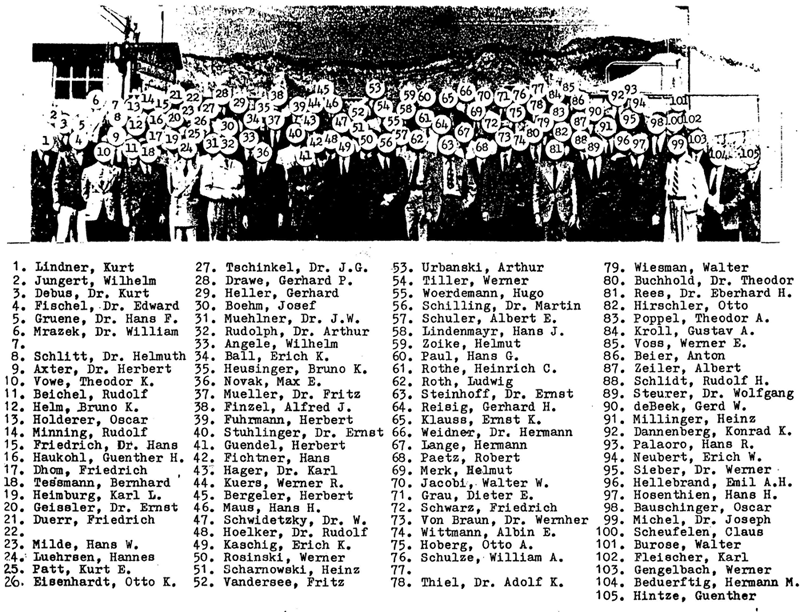 Hans Fischer
Hans Fischer
Notes:
• Group (1) - Arrived in the US on the SS Argentina on 11/16/1945
MSFC (Marshall Space Flight Center)
R-Research and Development
ASTR- Astrionics
E Electrical Integration
Building 4487
- Woodard
Related Links:
• Question - In Magnus von Braun's (brother to Wernher) Wikipedia bio, it says that he (Magnus) received his Masters degree in organic chemistry, and became an assistant to Nobel laureate Hans Fischer. In Hans Fischer's Wikipedia bio, it says he received his Nobel Prize for Chemistry in 1930. It says that the lunar crater Fischer was named after him in 1976. But this is not Fischer that came to Huntsville in 1950 because the wikipedia bio says. "He committed suicide in Munich after his institute and his work were destroyed during the last days of World War II."
• Wikipedia - Photo of the Project Paperclip Team at Fort Bliss
• Woodard - Names of the "Original 118 Team" at Redstone Arsenal, Huntsville, Alabama. List found here at Lunarpedia.org. Page under "Pioneers, Schemers and Dreamers" submitted by Grady Woodard. List shows names after Ft. Bliss with their reference work location and building number, from Redstone-Army Missile Command Roster - June 1966, MSFC 1960-1967 Charts, Organization Roster - June 1967

